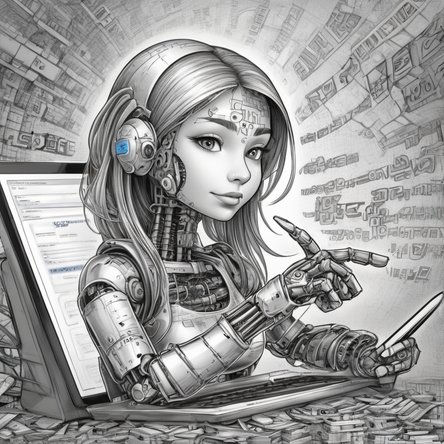Captcha Code: Understanding the Basics
CAPTCHA, which stands for Completely Automated Public Turing test to tell Computers and Humans Apart, is a widely used tool on the internet to distinguish human users from automated bots. CAPTCHAs are designed to be easy for humans to solve but difficult for computers. They serve as a gatekeeper, preventing malicious software from engaging in actions such as spamming, data scraping, and automated account creation.
The Origin and Evolution of CAPTCHA
The concept of CAPTCHA was introduced in the early 2000s by researchers at Carnegie Mellon University. The primary motivation was to combat the increasing problem of automated bots that were exploiting internet services. Early CAPTCHAs were simple image-based puzzles that required users to identify distorted text or select specific images. Over time, these tests have evolved to include more sophisticated challenges, such as recognizing objects in images, solving mathematical problems, and even understanding natural language.
How CAPTCHA Works
CAPTCHAs work by presenting a challenge that is easy for humans to solve but hard for bots. These challenges can be visual, auditory, or even interactive. The most common type of CAPTCHA involves distorted text that users must read and enter into a text box. The distortion makes it difficult for bots to recognize the characters using optical character recognition (OCR) software. Other types of CAPTCHAs include image recognition tasks, where users are asked to select all images containing a specific object, and audio CAPTCHAs, which require users to listen to and transcribe spoken words.
Types of CAPTCHA
There are several types of CAPTCHA, each with its unique characteristics and use cases. The most common ones include:
Text-based CAPTCHA
This type involves distorted or scrambled text that users must read and enter correctly. Text-based CAPTCHAs are widely used due to their simplicity and effectiveness. However, advances in OCR technology have made them less secure over time.
Image-based CAPTCHA
Image-based CAPTCHAs require users to identify objects within a set of images. For example, users might be asked to select all images containing traffic lights or cars. These CAPTCHAs leverage the human ability to recognize objects and are more challenging for bots to solve.
Audio CAPTCHA
Audio CAPTCHAs provide an alternative for visually impaired users. They involve listening to a series of spoken words or numbers and typing them into a text box. While effective, they can be challenging for users in noisy environments or those with hearing impairments.
Math-based CAPTCHA
Math-based CAPTCHAs present simple arithmetic problems that users must solve. These CAPTCHAs are straightforward for humans but can be problematic for bots that lack the ability to perform basic calculations.
Interactive CAPTCHA
Interactive CAPTCHAs require users to perform specific actions, such as dragging and dropping elements or solving puzzles. These CAPTCHAs are effective in preventing automated attacks while providing a more engaging user experience.
The Importance of CAPTCHA
CAPTCHAs play a crucial role in maintaining the security and integrity of online services. By preventing automated bots from accessing and abusing websites, CAPTCHAs help protect against various types of cyber threats, including:
Spam
Bots can be used to flood websites with spam messages, comments, and emails. CAPTCHAs help prevent this by ensuring that only human users can submit information.
Data Scraping
Automated bots can scrape valuable data from websites, such as email addresses, phone numbers, and other personal information. CAPTCHAs prevent bots from accessing and extracting this data.
Brute Force Attacks
Bots can attempt to guess passwords or other sensitive information through brute force attacks. CAPTCHAs add an additional layer of security, making it more difficult for bots to carry out these attacks.
Account Creation
Bots can create fake accounts on websites and social media platforms, which can be used for malicious purposes. CAPTCHAs help ensure that only genuine users can create accounts.
Challenges and Limitations of CAPTCHA
While CAPTCHAs are effective in preventing automated attacks, they are not without their challenges and limitations. Some of the common issues include:
Usability
CAPTCHAs can be difficult and frustrating for users, especially those with disabilities. Visual CAPTCHAs can be challenging for users with vision impairments, while audio CAPTCHAs can be problematic for those with hearing impairments.
Accessibility
Ensuring that CAPTCHAs are accessible to all users is a significant challenge. Many CAPTCHA implementations do not provide adequate alternatives for users with disabilities, leading to exclusion and frustration.
Security
As technology advances, bots are becoming increasingly sophisticated and capable of solving CAPTCHAs. This has led to an ongoing arms race between CAPTCHA developers and bot creators, with each side continually trying to outsmart the other.
User Experience
CAPTCHAs can negatively impact the user experience by adding an extra step to the process of accessing a website or service. This can lead to higher bounce rates and lower user satisfaction.
The Future of CAPTCHA
The future of CAPTCHA lies in balancing security and usability. Researchers and developers are continually exploring new methods and technologies to create more effective and user-friendly CAPTCHAs. Some of the emerging trends and innovations include:
Behavioral Analysis
Behavioral analysis involves monitoring and analyzing user behavior to determine if they are human or a bot. This can include tracking mouse movements, keystrokes, and other interactions. By analyzing these behaviors, websites can identify and block bots without requiring users to solve traditional CAPTCHAs.
Machine Learning
Machine learning and artificial intelligence are being used to develop more sophisticated CAPTCHA systems. These systems can adapt to new threats and improve over time, making it more difficult for bots to bypass security measures.
Biometric Verification
Biometric verification, such as facial recognition and fingerprint scanning, is being explored as a potential alternative to traditional CAPTCHAs. While still in the early stages, biometric verification has the potential to provide a more secure and seamless user experience.
Invisible CAPTCHA
Invisible CAPTCHA is a concept that aims to eliminate the need for users to solve explicit challenges. Instead, the system analyzes user behavior in the background and determines if they are human or a bot. This approach aims to improve the user experience while maintaining security.
Conclusion
CAPTCHAs are an essential tool in the fight against automated bots and cyber threats. They provide a critical layer of security that helps protect websites and online services from spam, data scraping, brute force attacks, and other malicious activities. While CAPTCHAs have their challenges and limitations, ongoing research and innovation are driving the development of more effective and user-friendly solutions. As technology continues to evolve, the future of CAPTCHA lies in finding the right balance between security and usability, ensuring that the internet remains a safe and accessible place for all users.




